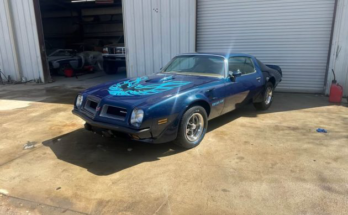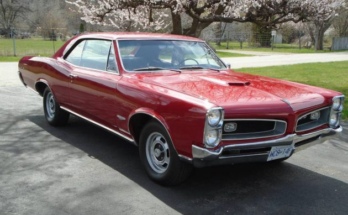




Also derived from the Valiant, the Duster was an instant hit. Plymouth sold more than 200,000 in 1970, and sales remained at six-digit levels until 1976. By the time the nameplate was retired, Plymouth had moved more than 1.3 million units.
Some 50 years later, the Duster is arguably one of the most underrated Mopars from the golden era. That’s mainly because it didn’t get the high-horsepower big-block V8s available in the Road Runner and Barracuda. But that’s not to say that the Duster can’t provide the thrills you get in a performance-oriented B-body.
Significantly lighter than the Road Runner and the GTX, the Duster is quite nippy when equipped with the 340-cubic-inch (5.6-liter) V8. The four-barrel small-block was factory rated at 275 horsepower and 340 pound-feet (461 Nm) of torque. The orange 1970 example you see here is one of those cars.
A first-year Duster, the only one that came with “Valiant” badges on the front fenders, this fastback looks like it just rolled off the assembly line more than a half-century ago. That’s because it was given a rotisserie restoration that included a fresh layer of Vitamin C paint.
One of ten High Impact hues offered by Chrysler from 1969 to 1973, Vitamin C was among the first to hit the options list. Introduced for the 1969 model year, it remained on offer until 1970. The color is called Go Mango on Dodge models from the era.
In addition to the fresh paint, this Duster also sports a pristine interior with the desirable bucket-seat option. It also has AC, but the unit was added during the restoration. And it’s a factory-correct item. By the way, Duster 340s with factory AC units are quite rare.
The good news continues under the hood with a numbers-matching 340-cubic-inch V8 paired with a four-speed manual gearbox. Granted, the 1970 Duster 340 is not exactly rare at nearly 25,000 units made, but you won’t see many in such outstanding condition.
This one’s not for sale, though. It currently resides in Matt Gauge’s private collection, and it doesn’t seem as if he’s planning on getting rid of it anytime soon. But just for reference, a 1970 Duster in this condition could hit close to $100,000 at public auction nowadays. Hit the play button below to check it out.


